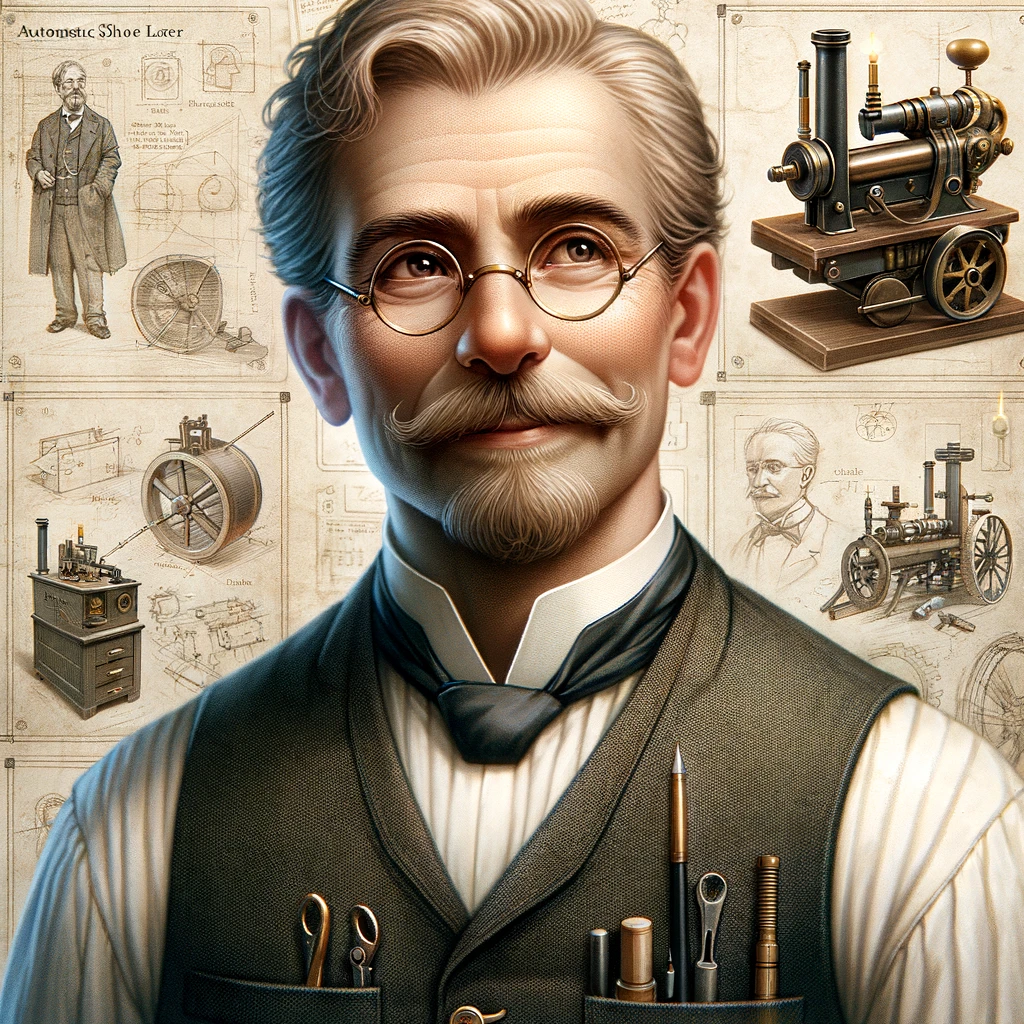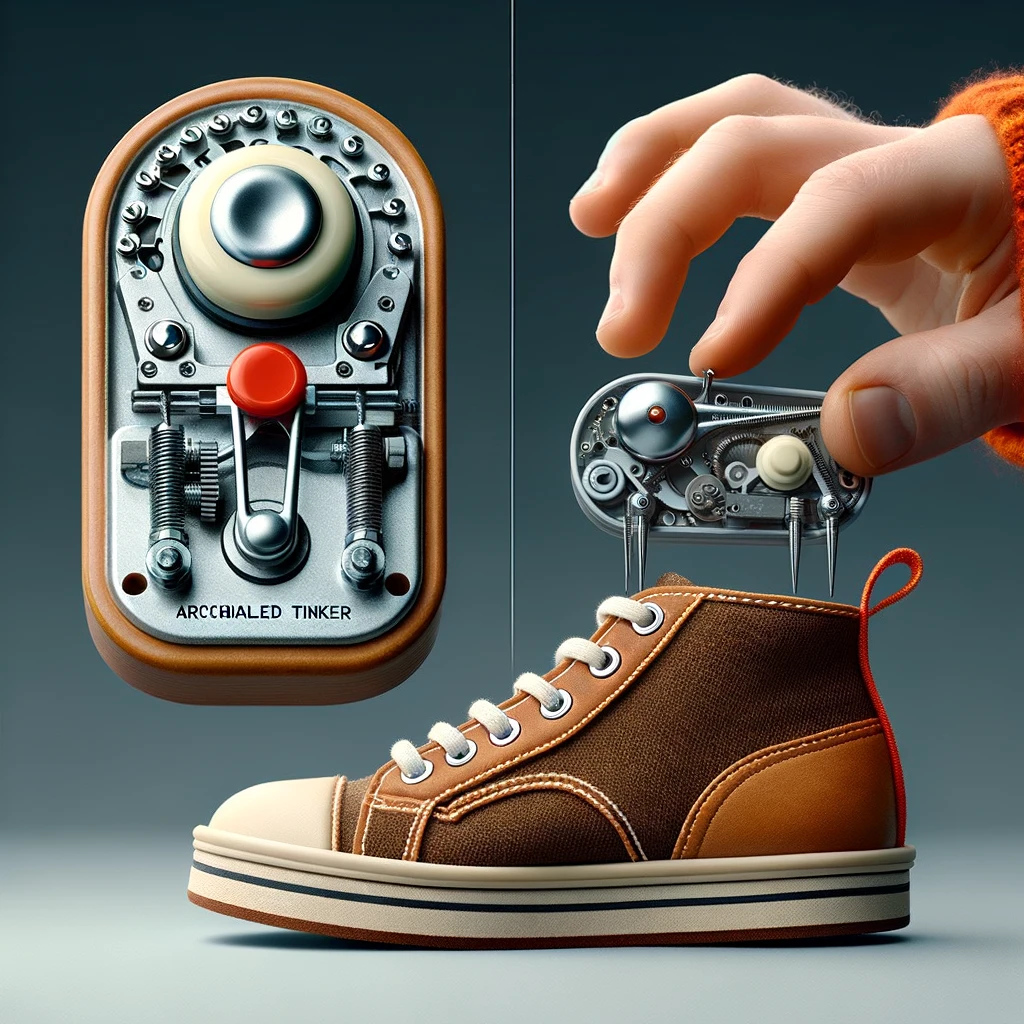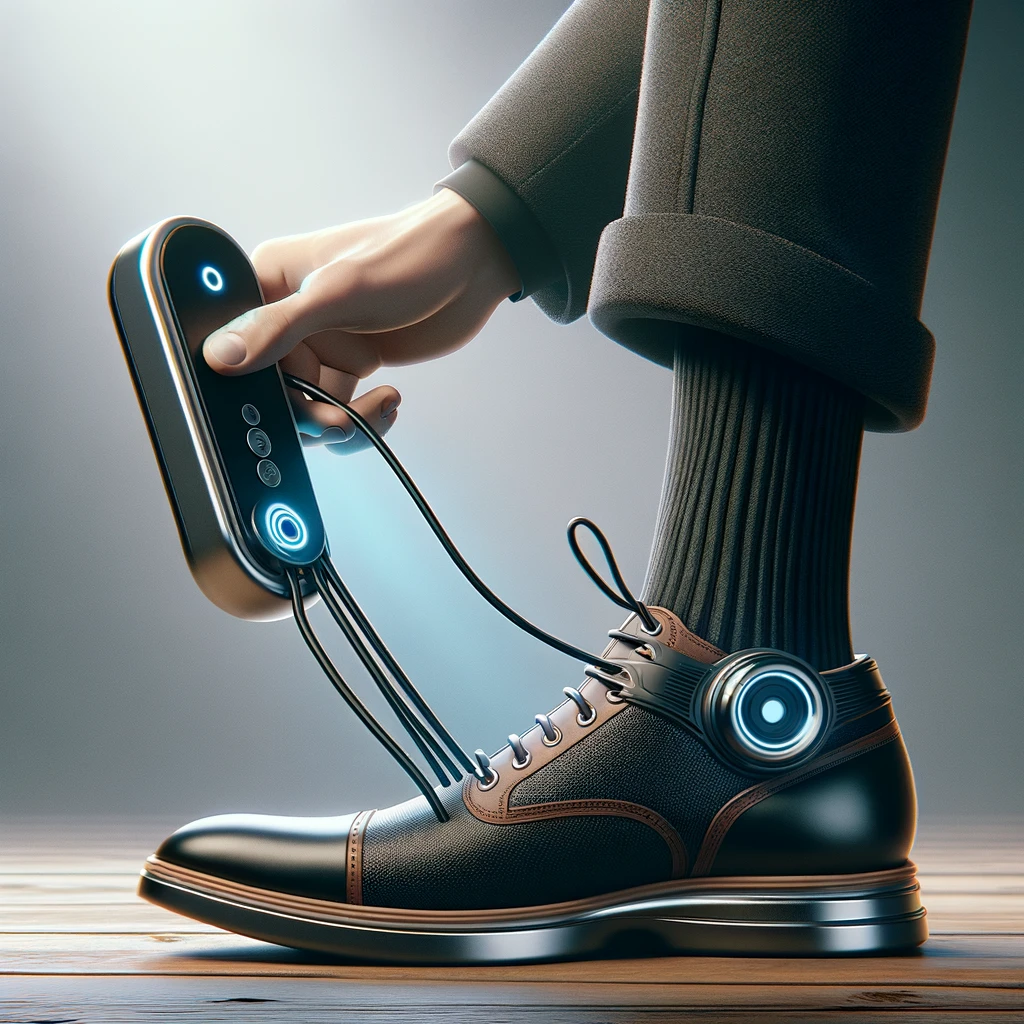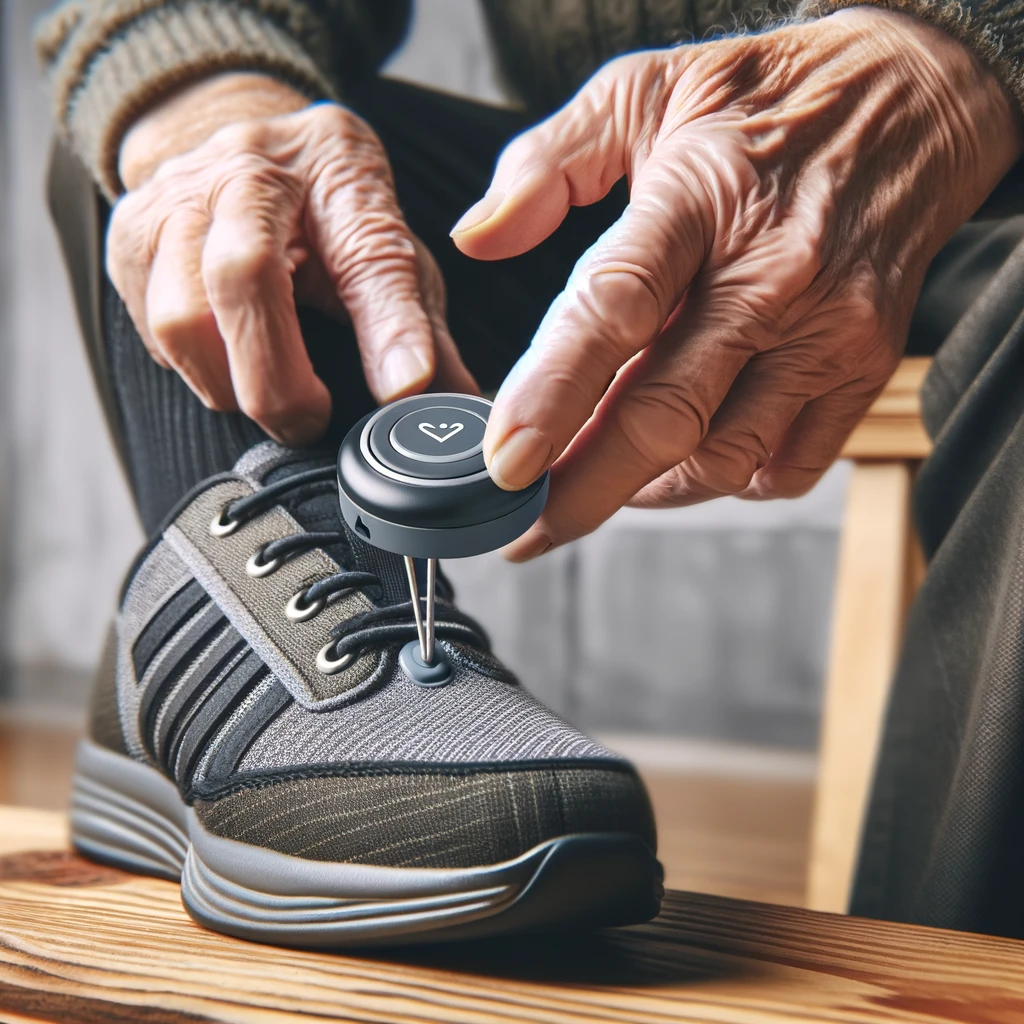Interviewer: Good morning, Archibald! It’s a pleasure to have you here. Your invention, the Automatic Shoe Lacer, has been creating quite the buzz. Can you tell us a bit about what inspired you to create it?
Archibald Tinker: Good morning! Delighted to be here. The inspiration came from watching my young nephew struggle with his shoelaces and thinking, “There must be an easier way.” I’ve always been fascinated by making daily tasks more efficient, so I set out to create a solution that not only helps children but busy adults as well.

Interviewer: That’s truly thoughtful. How does the Automatic Shoe Lacer work?
Archibald Tinker: It’s quite simple, yet ingenious, if I may say so. The device attaches to any standard shoe and, with a press of a button, it tightens and ties the laces using a small motor. The tension can be adjusted for comfort, and it’s powered by a tiny rechargeable battery.

Interviewer: Incredible! What challenges did you face while developing this device?
Archibald Tinker: The biggest challenge was miniaturizing the components to fit comfortably on a shoe without adding much weight. I also spent considerable time ensuring the mechanism was safe and wouldn’t accidentally activate while walking.

Interviewer: How do you envision the future of the Automatic Shoe Lacer?
Archibald Tinker: I see it becoming a staple in every household, much like the microwave. We’re already working on models with customizable designs to match personal styles and exploring voice-activated features. The goal is to make shoe-tying a thing of the past, one lace at a time.

Interviewer: Fascinating! Any advice for aspiring inventors out there?
Archibald Tinker: Always keep an eye on the mundane; the most impactful inventions often come from solving the simplest problems. And remember, perseverance is key. It took many prototypes to perfect the Automatic Shoe Lacer, but it was all worth it in the end.
Interviewer: Thank you, Archibald, for sharing your journey with us. We can’t wait to see where your invention takes you next.
Archibald Tinker: Thank you for having me. The future is untied!
This short conversation with Archibald Tinker not only sheds light on the innovative spirit behind the Automatic Shoe Lacer but also inspires those looking to make their mark on the world through invention.
The first prototypes of the Automatic Shoe Lacer, while a testament to Archibald Tinker’s ingenuity, were marvels of over-engineering. These early versions successfully automated the lacing process, a feat that marked a significant step forward in personal convenience technology. However, they were so laden with gears, springs, and mechanical components that the shoes themselves became impractical for everyday wear. Each pair was a cumbersome assembly of innovation and excess, making it nearly impossible to walk comfortably. Users found themselves more entangled in the marvel of the mechanism than in the convenience it was supposed to provide. Despite these initial setbacks, these prototypes laid the groundwork for future iterations, serving as a crucial learning point for Tinker. They underscored the importance of balance between functionality and practicality, guiding him towards creating a more refined and user-friendly version of the Automatic Shoe Lacer.
In the year 2032, the Automatic Shoe Lacer underwent a revolutionary reinvention, transforming it from a niche gadget into an essential everyday tool. Spearheaded by the innovative minds at TinkerTech, Archibald Tinker’s legacy company, the new model, dubbed the “LaceGenius 2.0,” integrated cutting-edge nano-technology and smart materials. This iteration was not only sleeker and more durable but also featured AI-driven adaptability, adjusting the lace tension in real-time based on the user’s activity level and foot contour. The reinvention was a leap forward in wearable technology, embedding wireless charging capabilities and seamless integration with personal health devices, making it a cornerstone in the burgeoning field of smart personal accessories.
The LaceGenius 2.0’s impact was felt far beyond the convenience of not having to tie shoelaces. It became a pivotal aid for individuals with mobility challenges, granting them greater independence and ease of use. Elderly users and those with physical disabilities found the device particularly empowering, heralding it as a significant step forward in assistive technology. Moreover, the environmental footprint of the device was minimized, featuring biodegradable components and a solar-powered option, reflecting the societal shift towards sustainability. The 2032 reinvention of the Automatic Shoe Lacer was not just about keeping shoes secure; it was a testament to how thoughtful design and technology can enhance daily life, promote inclusivity, and pave the way for a more accessible future.
Photos of the TinkerTech factory in 2032, showcasing a marvel of modern engineering and environmental design. This state-of-the-art facility incorporates advanced green technologies, such as solar panels, vertical gardens, and wind turbines, reflecting a strong commitment to sustainability. The architecture of the factory is sleek and innovative, with transparent materials that offer a glimpse inside to the high-tech production lines. Lush greenery and renewable energy sources surround the building, emphasizing TinkerTech’s dedication to eco-friendly practices.




